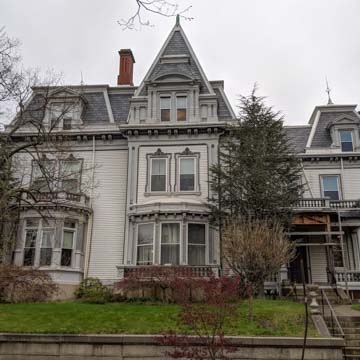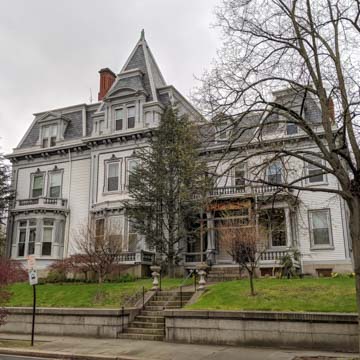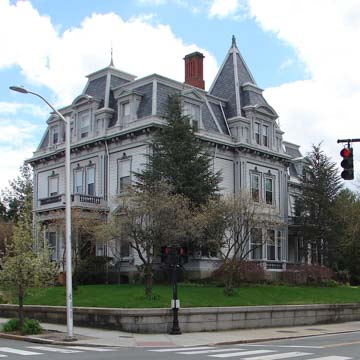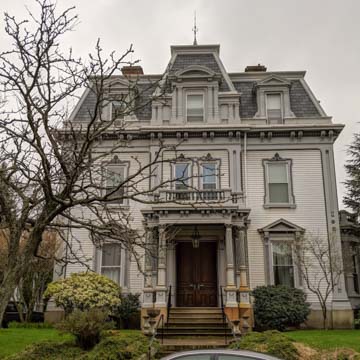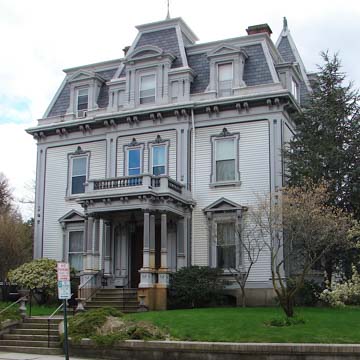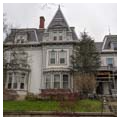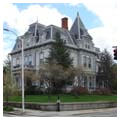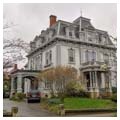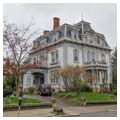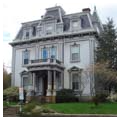These two Second Empire houses, built by the same architect ten years apart, offer plain and fancy versions of the mansard-roofed house. In its severe boxiness, the Mitchell House, for a prominent merchant, is typical of William Walker's work of the mid-1860s, a sober version of the newly stylish mansard roof placed atop a traditional center-hall, four-room-plan mass. A semicircular three-window bay with loggia provides a flourish at the top of the south elevation and looks down to Narragansett Bay. Across the street, his later and larger essay in the French mode for Campbell, a wool wholesaler, is more assured, far more ornamental, and doubtless influenced by the new city hall, then building. Although it is now aluminum sided, this fortunately occurred without injury to its trim, which provides perhaps the most elaborate example of Victorian French Renaissance architectural ornament in the city. Both houses are now in institutional use: the first as a Brown University departmental building; the second as a center for transcendental meditation. Both contain interesting interior fragments.
You are here
Horatio N. Campbell House
If SAH Archipedia has been useful to you, please consider supporting it.
SAH Archipedia tells the story of the United States through its buildings, landscapes, and cities. This freely available resource empowers the public with authoritative knowledge that deepens their understanding and appreciation of the built environment. But the Society of Architectural Historians, which created SAH Archipedia with University of Virginia Press, needs your support to maintain the high-caliber research, writing, photography, cartography, editing, design, and programming that make SAH Archipedia a trusted online resource available to all who value the history of place, heritage tourism, and learning.














